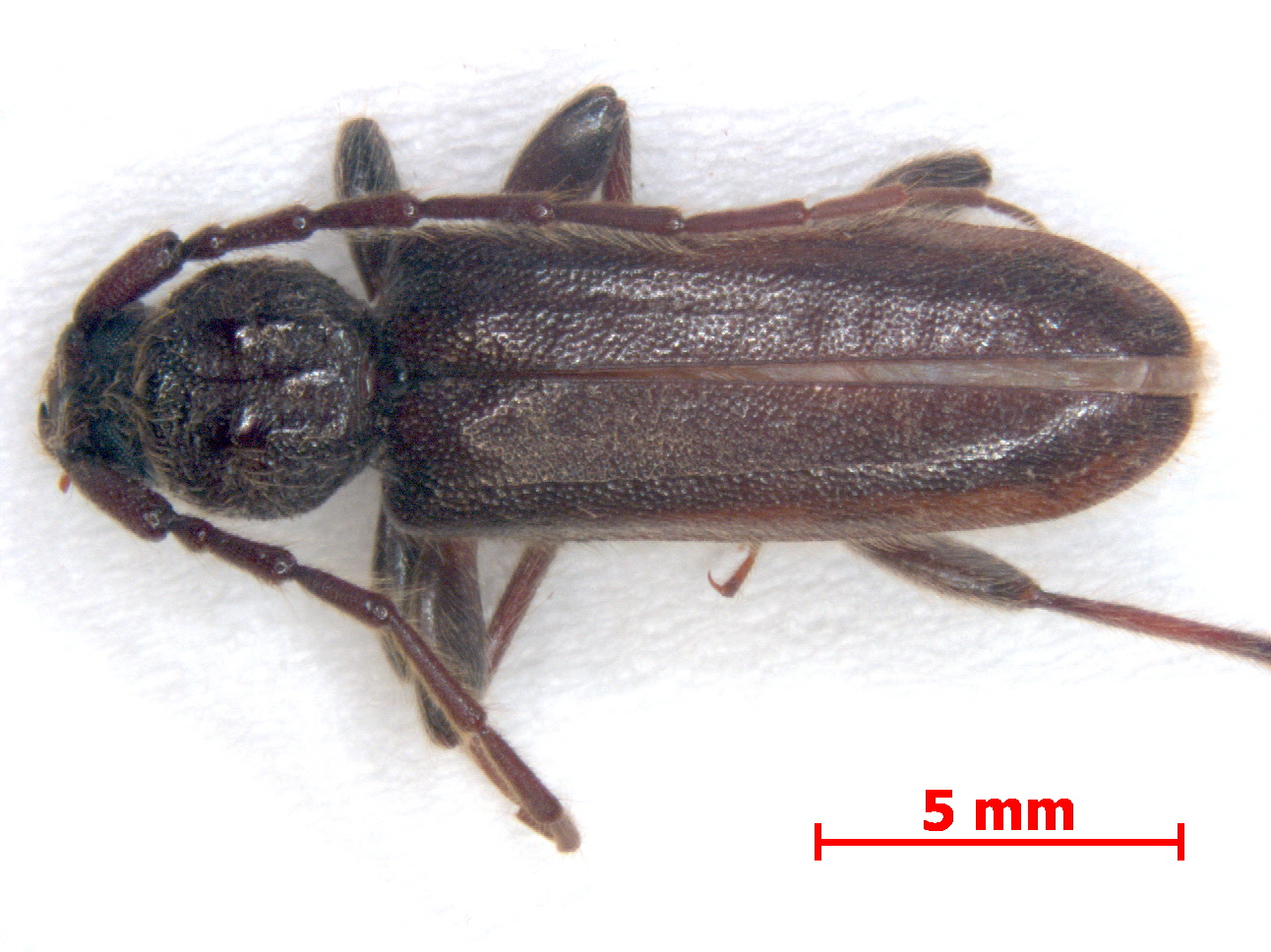| T O P I C R E V I E W |
| Zhu |
Posted - 20/09/2010 : 04:41:01

Dear Dr. Francesco Vitali:
How are you. Long time no see. Sorry to bother you again.
This is Zhu Hongbin from China.
The beetle was consequently found on Mozambique logs.
Could you kindly offer a identification or hint? |
| 6 L A T E S T R E P L I E S (Newest First) |
| Francesco |
Posted - 22/09/2010 : 10:09:50
Dear Zhu Hongbin, of course you can call me Francesco (Franc seems Franco, a different name in Italy). Thank you very much for your wishes, which I liked a lot.
Regarding Zamium, both Guibourtia and Combretum imberbe are present in Austral Africa, so it would be nice to discover and signalised the true host. |
| Zhu |
Posted - 21/09/2010 : 10:00:07
BTW, the host of Zamium should be Guibourtia sp., Caesalpiniaceae. I asked the intercept. Since the imago fly from the logs, there is one but only possibility, Combretum imberbe, but I think the previous one is more likely because it is on hight mountain, more like Asemum spp. or Spondylis sp. live in same kind region. |
| Zhu |
Posted - 21/09/2010 : 09:22:44
Hello,Dear Francesco:
May I call your Sirname? Or your friend call you Franc? Today is the day before Mid Autumn, a Chinese festival, but like science, Korean people said this is originated from them. It is not important, let me wish you joyful and happiness advent your's.
Your info about the host of Zamium, and id of Spondylis spp. are so precious. In fact, I know little about Spondylis, I just pick up as an example. But Spondylis is of quarantine value, deserving more studying of mine.
bye for now. |
| Francesco |
Posted - 21/09/2010 : 08:58:30
Dear Mr. Zhu Hongbin
it is difficult to say something about the survival possibilities of this species in China, since the host plant of Zamium has been never mentioned in any papers I have consulted. I guess that it is related to some Austral conifers absent from China, but I do not know with certainty.
Concerning the second question, I have some Spondylis buprestoides from North Korea, not from China but close, in my collection. Actually, all look really fairly different from European congeners in the texture of the dorsal granulation, which is finer, nearly silky.
The Chinese population has been already described as Spondylis sinensis by Nonfried (1892) on specimens from Kwang-si, but Plavilstshikov (1931) considered it as a synonym of S. buprestoides... an idea I do not completely agree. |
| Zhu |
Posted - 21/09/2010 : 03:50:28
Dear Dr. Vitali:
Thank you for your highly emotional and professional reply. My new colleague, Qian Lu, was surprised that you are so keen to help and your knowledges are such a real Master.
It seems that Spondydids are readily intercepted from tropical timbers when bark present. Simingly as Aseminae from Russian logs. i.e. Glaucytes spp. from PNG, which we have caught many. I think the Spondylids largely will not survive in China, right?
We have only Spondylis buprestoides here in China. And they seem different, even in same category, like you said, primitive and diversified, right?
Finally,thank indeed.
|
| Francesco |
Posted - 20/09/2010 : 22:22:43
Dear Mr. Zhu Hongbin,
it is a big pleasure for me to hear from you again. You are always welcome in this forum!
Your beetle belongs to a fairly primitive species, hence it is difficult to be correctly identified. It seems to me a male of Zamium incultum Pascoe, 1864 (Spondylidinae), though it does not perfectly correspond to the only picture I have of this species, while it corresponds at all to the description of Z. triviale Fåhraeus, 1872. Nonetheless, the latter species has been considered as a synonym of the former; therefore, it should be about the same species. |
|
|


